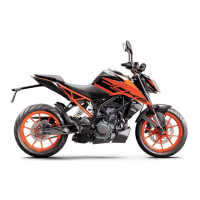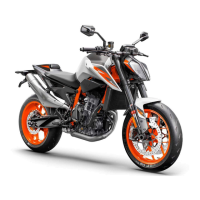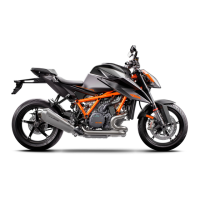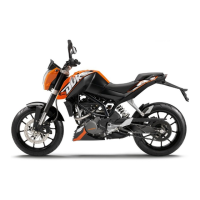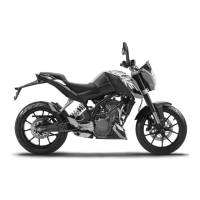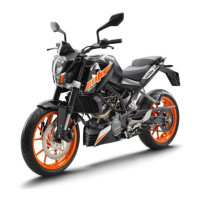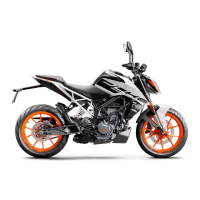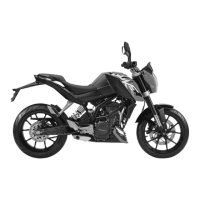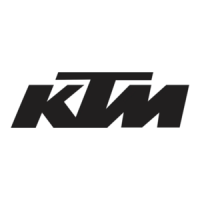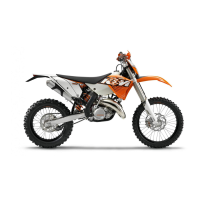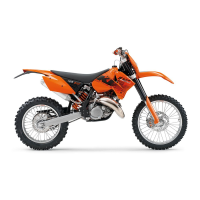BRAKE SYSTEM 13
133
Warning
Danger of accidents Old brake fluid reduces the braking effect.
– Make sure that brake fluid for the front and rear brake is changed in accordance with the service
schedule. (Your authorized KTM workshop will be glad to help.)
Note
Environmental hazard Hazardous substances cause environmental damage.
– Dispose of oils, grease, filters, fuel, cleaning agents, brake fluid, etc., correctly and in compliance with
the applicable regulations.
Info
Never use DOT 5 brake fluid. It is silicone-based and purple in color. Oil seals and brake lines are not
designed for DOT 5 brake fluid.
Avoid contact between brake fluid and painted parts. Brake fluid attacks paint.
Only use clean brake fluid from a sealed container.
Preparatory work
– Check the rear brake linings. ( p. 135)
